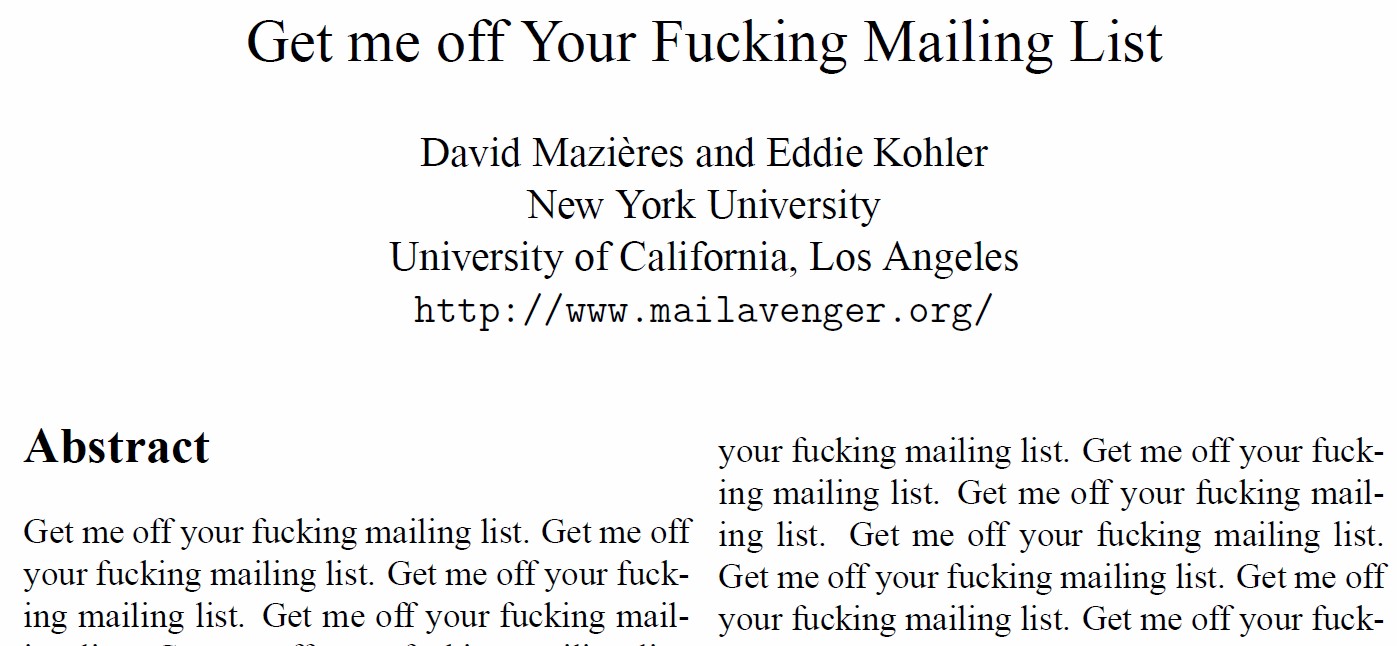Welcome to DU!
The truly grassroots left-of-center political community where regular people, not algorithms, drive the discussions and set the standards.
Join the community:
Create a free account
Support DU (and get rid of ads!):
Become a Star Member
Latest Breaking News
General Discussion
The DU Lounge
All Forums
Issue Forums
Culture Forums
Alliance Forums
Region Forums
Support Forums
Help & Search
Science
Related: About this forumWhy A Fake Article Titled “Cuckoo for Cocoa Puffs?” Was Accepted By 17 Medical Journals
As a medical researcher at Harvard, Mark Shrime gets a very special kind of spam in his inbox: every day, he receives at least one request from an open-access medical journal promising to publish his research if he would only pay $500.
"You block one of them with your spam filter and immediately another one pops up," Shrime, an MD who is pursuing a PhD in health policy, tells me.
These emails are annoying, for sure, but Shrime was worried that there might be bigger issues at stake: What exactly are these journals publishing and who is taking these journals to be credible sources of medical information?
Shrime decided to see how easy it would be to publish an article. So he made one up. Like, he literally made one up. He did it using www.randomtextgenerator.com. The article is entitled "Cuckoo for Cocoa Puffs?" and its authors are the venerable Pinkerton A. LeBrain and Orson Welles. The subtitle reads: "The surgical and neoplastic role of cacao extract in breakfast cereals." Shrime submitted it to 37 journals over two weeks and, so far, 17 of them have accepted it. (They have not "published" it, but say they will as soon as Shrime pays the $500. This is often referred to as a "processing fee." Shrime has no plans to pay them.) Several have already typeset it and given him reviews, as you can see at the end of this article. One publication says his methods are "novel and innovative"!. But when Shrime looked up the physical locations of these publications, he discovered that many had very suspicious addresses; one was actually inside a strip club.
more
http://www.fastcompany.com/3041493/body-week/why-a-fake-article-cuckoo-for-cocoa-puffs-was-accepted-by-17-medical-journals
InfoView thread info, including edit history
TrashPut this thread in your Trash Can (My DU » Trash Can)
BookmarkAdd this thread to your Bookmarks (My DU » Bookmarks)
5 replies, 1198 views
ShareGet links to this post and/or share on social media
AlertAlert this post for a rule violation
PowersThere are no powers you can use on this post
EditCannot edit other people's posts
ReplyReply to this post
EditCannot edit other people's posts
Rec (2)
ReplyReply to this post
5 replies
 = new reply since forum marked as read
Highlight:
NoneDon't highlight anything
5 newestHighlight 5 most recent replies
= new reply since forum marked as read
Highlight:
NoneDon't highlight anything
5 newestHighlight 5 most recent replies
Why A Fake Article Titled “Cuckoo for Cocoa Puffs?” Was Accepted By 17 Medical Journals (Original Post)
n2doc
Jan 2015
OP
Erich Bloodaxe BSN
(14,733 posts)1. I don't care for that link.
It tried twice to open a pdf file when I clicked through onto it. I really don't like websites that try to automatically do things other than simply display the page unless I ask them to.
n2doc
(47,953 posts)2. Didn't notice that on my browser
I think the pdf is a pdf of the science article discussed by the page. It is in an embedded window on my browser (Safari).
unblock
(52,243 posts)3. 17 or 37 journals? that's a who's who of pay-to-play resume-fluffing scams.
DetlefK
(16,423 posts)4. Here's an incomplete list of fraudulent scientific journals:
http://scholarlyoa.com/individual-journals/
If a journal asks YOU to do the text-formatting, then it's fake. A real journal has editors for that.
And one more thing:
 ?w=450
?w=450
http://scholarlyoa.com/2014/11/20/bogus-journal-accepts-profanity-laced-anti-spam-paper/
If a journal asks YOU to do the text-formatting, then it's fake. A real journal has editors for that.
And one more thing:
 ?w=450
?w=450
http://scholarlyoa.com/2014/11/20/bogus-journal-accepts-profanity-laced-anti-spam-paper/
Warren DeMontague
(80,708 posts)5. "Pinkerton A. LeBrain"
